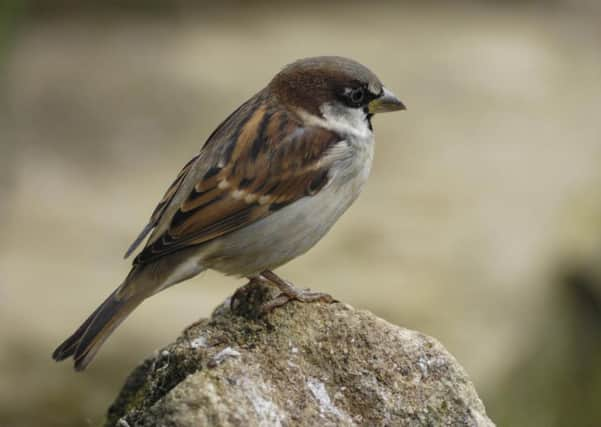House sparrows remain Fife's most common garden visitors


The region’s top three most frequently spotted birds were the same as in 2015, with house sparrows followed by starlings and blackbirds.
However, more great tits were recorded, and coal tits and long-tailed tits both also rose up the rankings.
Advertisement
Hide AdAdvertisement
Hide AdAcross Scotland over 36,000 people joined in the world’s largest garden wildlife survey during the last weekend in January.
Participants counted 626,335 feathered visitors during the 37th RSPB Big Garden Birdwatch.
Keith Morton, species policy officer at RSPB Scotland, said: “2016 was another great year for Big Garden Birdwatch in Scotland. We’d like to thank everyone who spent an hour of their weekend in January taking part; the data collected helps us build a better picture of how our gardens birds are faring year to year.”
Different birds are affected in different ways by the weather. The increase in smaller garden birds recorded, such as long-tailed tits, suggests that the lack of sustained cold spell of weather this winter helped these species survive in far greater numbers.
Advertisement
Hide AdAdvertisement
Hide AdThe food these birds rely on, such as insects, would have been easier to find, helping to boost the numbers.
During periods of colder temperatures birds struggle to find food in the wider countryside so become more reliant on garden feeders. Long-tailed tits, and other smaller birds, have adapted to feeding on seeds and peanuts at bird tables or from hanging feeders.
Keith added: “Although they might have found gathering food easier in the wild this winter, birds will still have needed the food people put out for them. Once a bird has found a reliable source of food it will keep coming back to it.”
Despite this boost in numbers many other garden favourites are still struggling. In Scotland sightings of well-known species such as starlings and song thrushes have continued to drop, declining by 81 per cent and 89 per cent respectively since the first birdwatch in 1979.